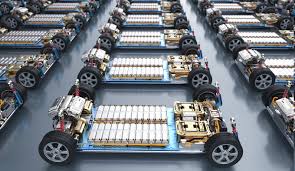ISLAMABAD, JULY22: A novel battery type may emerge in the next 10 years as a safer, more effective, and less harmful substitute for the lithium-ion batteries we currently use. Scientists at Denmark Technical University (DTU) have used potassium silicate, a mineral present in common rocks, to create a novel material for batteries.
Your electric car’s lithium-ion batteries currently control how far you can drive between charges and how quickly you can recharge them. However, their functionality and safety are restricted, and lithium is a costly, hazardous, and difficult-to-find chemical. New batteries that are equally effective but more affordable and environmentally benign are needed as more people convert to driving electric vehicles.
Using potassium and sodium silicate, researcher Mohamad Khoshkalam at DTU has created a substance that may eventually take the place of lithium in batteries. You can find these minerals in rocks that you may find in your yard or on the seashore. This novel material may be shaped into a thin layer inside the battery because it is not sensitive to moisture or air.
It is inexpensive, eco-friendly, paper-thin, and milky white. At about 40 degrees, it conducts ions well. Because they can now be produced at room temperature and in an open environment, batteries will be produced more easily in the future. Furthermore, it can increase capacity and lifespan without the costly and dangerous elements like cobalt that are now utilized in lithium-ion batteries.
The research made by Mohammad Khoshkalam is significant since a battery’s electrolyte determines its capacity, charging time, lifespan, and safety. The electrolyte maintains the electrical current flowing in the battery by allowing ions to pass between its components. These ions travel more quickly in his new material than they do in lithium-based batteries.
For electric automobiles, this new solid-state battery has the potential to revolutionize the industry by enabling them to travel up to 1,000 kilometers on a single 10-minute charge. Because they wouldn’t have flammable liquids, they would also be safer. But before these batteries can be manufactured on a big scale, there are still a lot of obstacles to be solved.
The technology is still in its infancy and may not be commercially available for another ten years. Despite the dangers and difficulties, Mohamad Khoshkalam has hope. In addition to patenting his novel substance, he founded K-Ion to create battery componentry. With the aim of having it ready in 1-2 years, they are currently working on a prototype to demonstrate to businesses and investors that the material works.
